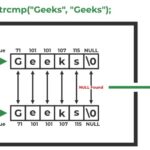Comparing and contrasting two pieces of music involves a detailed analysis of their various elements. By examining these components, we can understand how each piece creates its unique sound and effect. This guide provides a structured approach to comparing music, using the acronym MR HITS: Melody, Rhythm, Harmony, Instrumentation, Texture, and Structure.
Melody
When analyzing melody, consider the following:
- Conjunct or Disjunct: Does the melody move smoothly between notes (conjunct) or jump between larger intervals (disjunct)? A conjunct melody may evoke a sense of calm, while a disjunct melody can create drama.
- Ornamentation: Are there added notes or embellishments that decorate the main melody? Trills, grace notes, and mordents can add expressiveness and complexity. Compare the use and types of ornamentation in both pieces.
- Phrasing: How are the melodic ideas grouped into phrases? Periodic phrasing, with clear antecedent and consequent phrases, creates a sense of balance. Irregular phrasing can be more unpredictable and expressive.
- Motives and Themes: Identify recurring melodic fragments (motives) and more extended melodic ideas (themes). How are these developed and transformed throughout each piece? Comparing thematic material can reveal similarities or differences in their overall structure. For instance, one piece might rely heavily on the development of a single theme, while another introduces multiple contrasting themes.
 Melodic Contour
Melodic Contour
Rhythm
Analyze the rhythmic aspects of each piece by considering:
- Meter: What is the underlying pulse and beat pattern (e.g., duple, triple, quadruple)? Does the meter remain consistent, or does it change? Changes in meter can signify shifts in mood or energy.
- Metric Modulation: Does the music shift from one tempo or meter to another seamlessly? This technique can create a sense of acceleration or deceleration.
- Syncopation and Hemiola: Are there off-beat accents or rhythmic patterns that disrupt the regular pulse? Syncopation adds rhythmic interest and can contribute to a feeling of groove. Hemiola creates a sense of rhythmic ambiguity by layering contrasting rhythmic patterns.
- Polyrhythms: Does the music feature simultaneous use of different rhythmic patterns? This technique creates a complex and layered rhythmic texture. African music often utilizes complex polyrhythms.
Harmony and Tonality
Examine the harmonic language of each piece:
- Chords: Are the chords primarily diatonic (belonging to the key) or chromatic (using notes outside the key)? Chromatic harmonies often create a heightened sense of tension or dissonance.
- Tonality: Is the music clearly in a major or minor key, or is it modal or atonal? The tonality establishes the overall harmonic framework of the piece.
- Cadences: How does the music create a sense of closure or resolution at the end of phrases and sections? Compare the types of cadences used in each piece.
- Dissonance: How is dissonance (clashing harmonies) used and resolved? Does one piece embrace dissonance more than the other?
- Harmonic Rhythm: How frequently do the chords change? A faster harmonic rhythm can create a sense of urgency, while a slower harmonic rhythm can feel more relaxed.
Instrumentation
Consider the instruments used in each piece:
- Instruments: What instruments are used, and how does this choice contribute to the overall timbre and texture? Compare and contrast the specific instruments chosen and their roles within the ensemble.
- Ensemble: Is the music for a solo instrument, chamber ensemble, or orchestra? The size and makeup of the ensemble will significantly impact the sound.
- Extended Techniques: Are there any unusual playing techniques employed that create unique sounds or effects? For example, string harmonics or prepared piano techniques. Noting the use of these techniques demonstrates a deeper understanding of the piece.
Texture
Analyze how the various musical lines interact:
- Monophonic, Homophonic, or Polyphonic: Is the texture a single melodic line (monophonic), a melody with accompaniment (homophonic), or multiple independent melodic lines (polyphonic)?
- Counterpoint: If polyphonic, how do the melodic lines interact? Is there imitation or contrast between them?
- Homophony: If homophonic, describe the relationship between the melody and accompaniment. Is the accompaniment simple or complex?
- Density: How many layers of sound are present at different points in the music? Does the texture change throughout the piece? A thicker texture might create a sense of grandeur, while a thinner texture may feel more intimate.
Structure/Form
Analyze the overall organization of each piece:
- Form: What is the overall form of the piece (e.g., binary, ternary, rondo, sonata form)? Does the form contribute to the piece’s coherence and unity?
- Thematic Development: How are melodic themes developed and transformed throughout the piece? Are there recurring sections or variations?
- Sections: Are there clear contrasting sections within the piece? How do these sections relate to each other?
By systematically analyzing these elements, you can develop a comprehensive comparison and contrast of two pieces of music, demonstrating a deep understanding of their unique characteristics.
